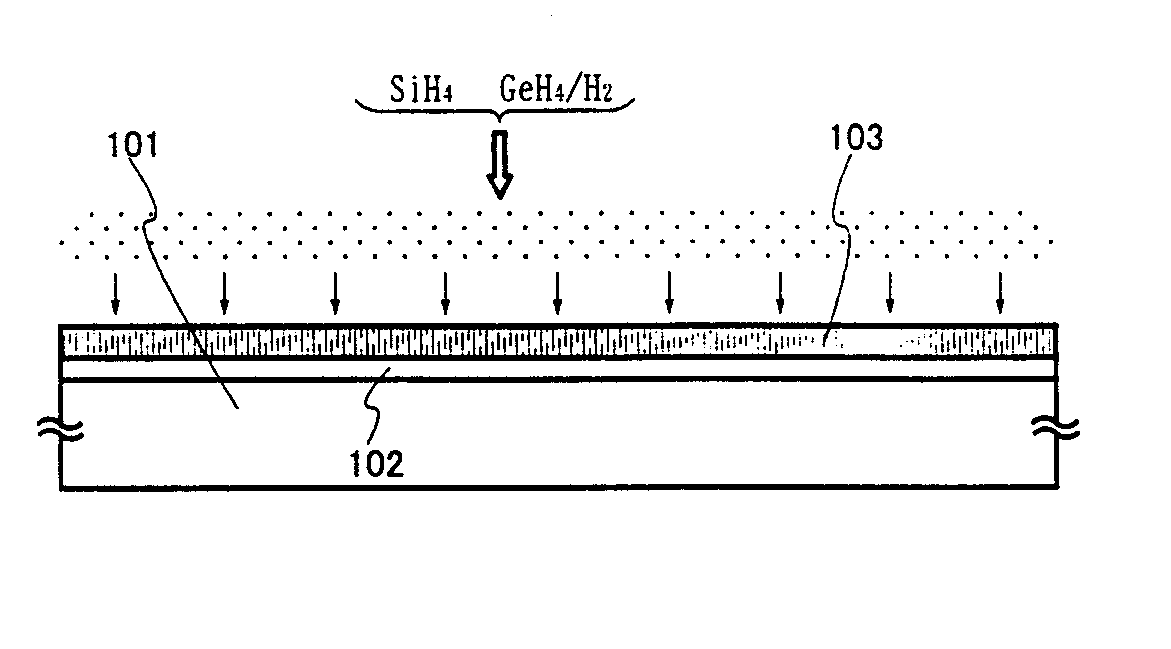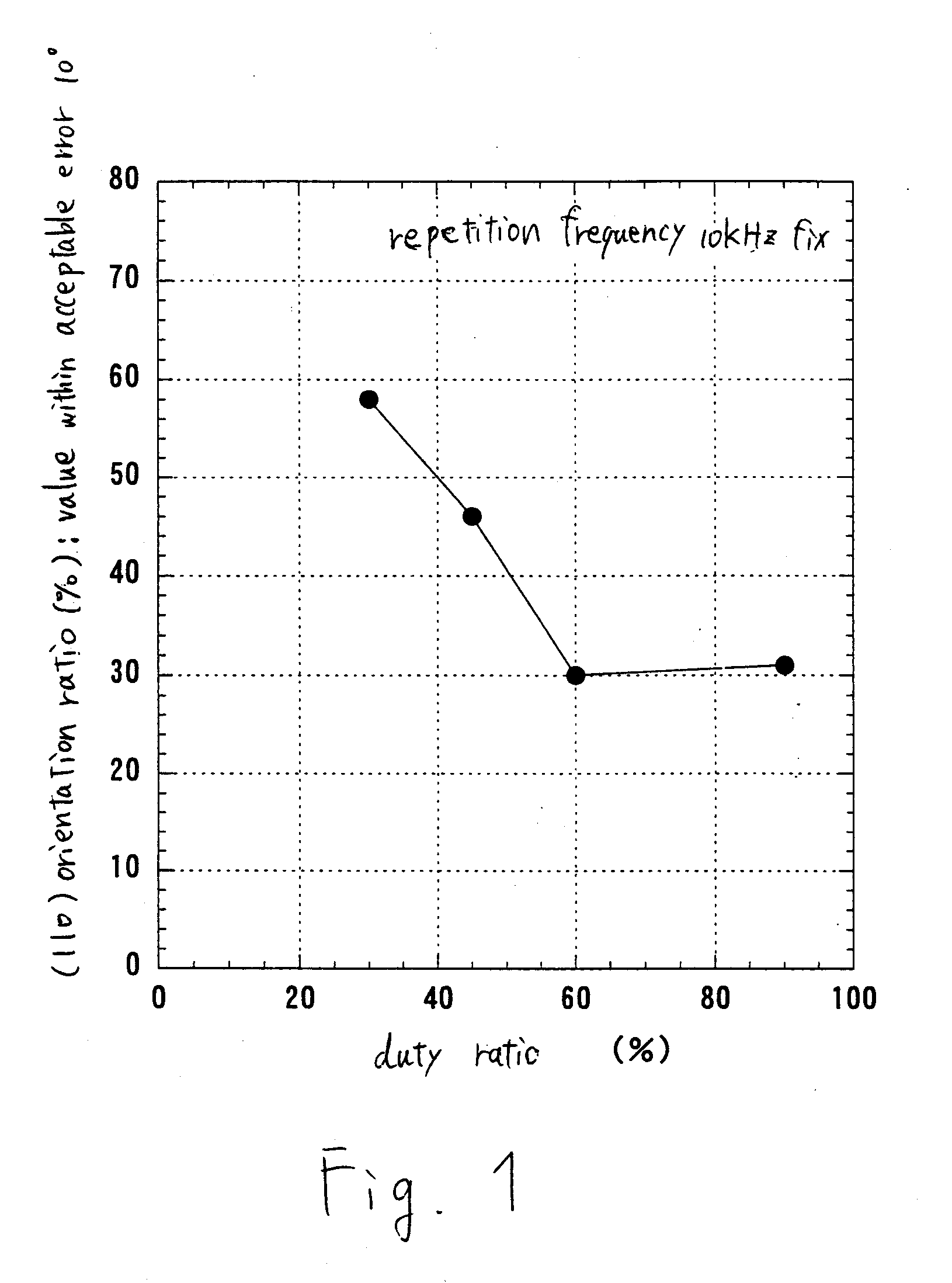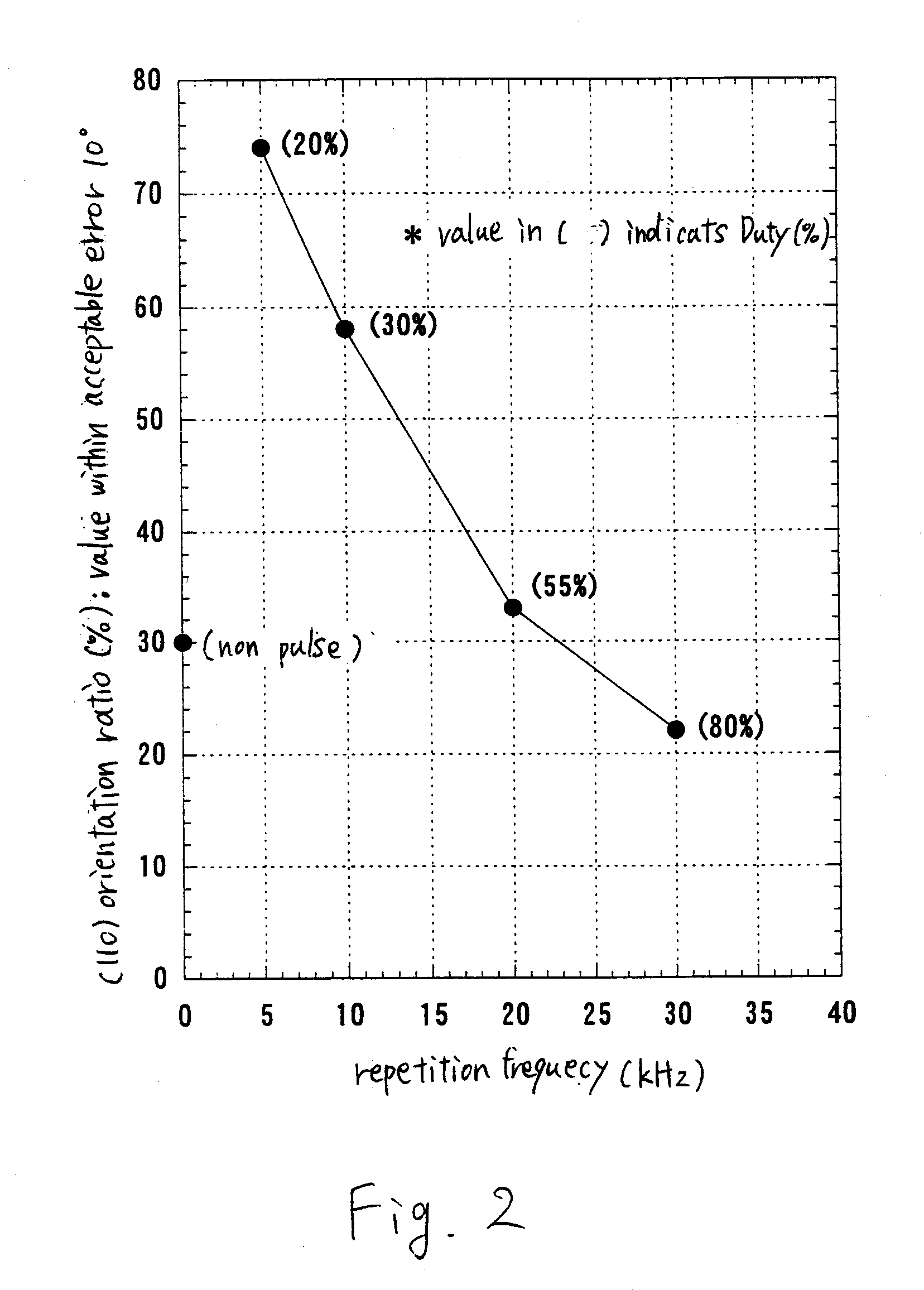Semiconductor Device and Method of Manufacturing the Same
a technology of semiconductors and semiconductors, applied in the field of semiconductor films, can solve the problems of local distortion and the effect of limiting the orientation of crystals, and achieve the effect of reducing internal stress and volume shrinkage accompanied by crystallization
- Summary
- Abstract
- Description
- Claims
- Application Information
AI Technical Summary
Benefits of technology
Problems solved by technology
Method used
Image
Examples
embodiment 1
[0095]FIGS. 7A to 7D illustrates a method of forming a crystalline semiconductor film in which an amorphous silicon film containing germanium is crystallized by doping the entire surface of the film with a metal element for promoting crystallization of silicon. In FIG. 7A, a substrate 101 is a glass substrate typical example of which is a Corning # 1737 glass substrate (product of Corning Incorporated). A blocking layer 102 is formed on the surface of the substrate 101 from a silicon oxynitride film with a thickness of 100 nm by plasma CVD using SiH4 and N2O. The blocking layer 102 is provided in order to prevent an alkaline metal contained in the glass substrate from diffusing into a semiconductor film to be formed on the layer.
[0096] An amorphous semiconductor film 103 comprised of silicon and germanium is formed by plasma CVD. GeH4 gas diluted by SiH4 and H2 to 10% is introduced in a reaction chamber and dissolved by glow electric discharge to be deposited on the substrate 101. ...
embodiment 2
[0100] A method of selectively introducing an element for promoting crystallization of an amorphous semiconductor film will be described with reference to FIGS. 8A to 8C. In FIG. 8A, a substrate 120 may be the aforementioned glass substrate or a quartz substrate. When the glass substrate is employed, a blocking layer is formed as in Embodiment 1.
[0101] An amorphous semiconductor film 121 comprised of silicon and germanium is formed by plasma CVD using intermittent electric discharge or pulsed electric discharge as in Embodiment 1.
[0102] A silicon oxide film 122 with a thickness of 150 nm is formed on the amorphous semiconductor film 121 comprised of silicon and germanium. The method of forming the silicon oxide film is not limited. For example, the film is formed through electric discharge in which a mixture of tetraethyl ortho silicate (TEOS) and O2 is used, the reaction pressure is set to 40 Pa, the substrate temperature is set to 300 to 400° C., and the high frequency (13.56 MH...
embodiment 3
[0105] The crystalline semiconductor film formed in accordance with the method described in Embodiment 1 or 2 still has the element that has been utilized in crystallization, typically, nickel. Although not distributed in the film uniformly, the element remains in a concentration over 1×1019 atoms / cm3 on the average. The film in this state can be used for a TFT and a channel formation region of other various semiconductor devices, of course, but it is preferred to remove the element from the film by gettering.
[0106] This embodiment describes an example of the gettering method with reference to FIGS. 9A to 9C. In FIG. 9A, the glass substrate of Embodiment 1 or a quartz substrate is employed as a substrate 130. When the glass substrate is used, a blocking layer is formed similar to Embodiment 1. A crystalline semiconductor film 131 is formed by the method described in Embodiment 1 or the method described in Embodiment 2. On the surface of the crystalline semiconductor film 131, a sil...
PUM
 Login to View More
Login to View More Abstract
Description
Claims
Application Information
 Login to View More
Login to View More - R&D
- Intellectual Property
- Life Sciences
- Materials
- Tech Scout
- Unparalleled Data Quality
- Higher Quality Content
- 60% Fewer Hallucinations
Browse by: Latest US Patents, China's latest patents, Technical Efficacy Thesaurus, Application Domain, Technology Topic, Popular Technical Reports.
© 2025 PatSnap. All rights reserved.Legal|Privacy policy|Modern Slavery Act Transparency Statement|Sitemap|About US| Contact US: help@patsnap.com



